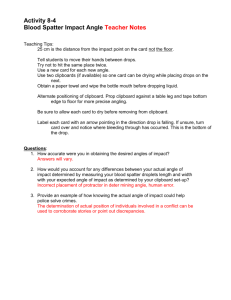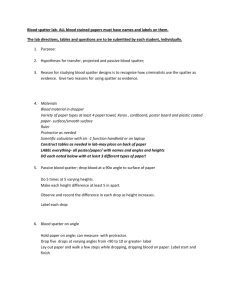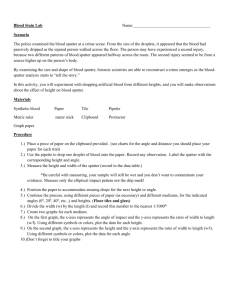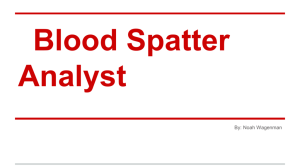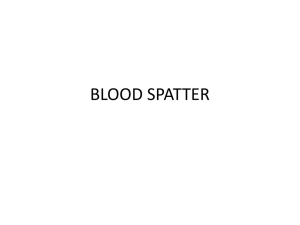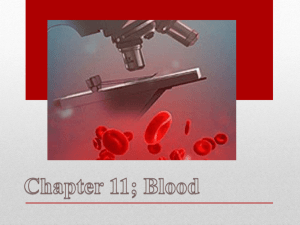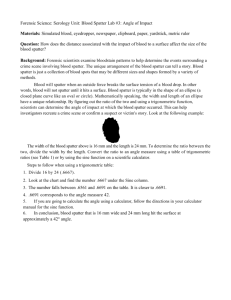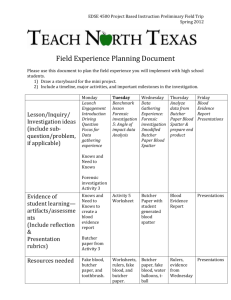BLOOD SPATTER LAB
advertisement
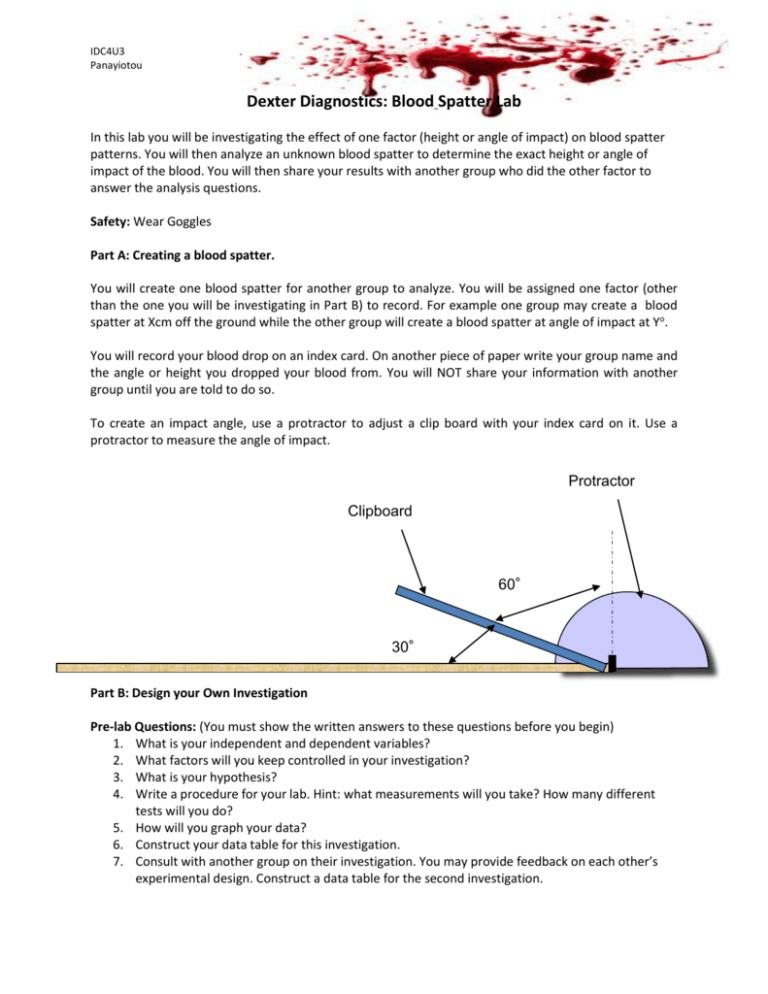
IDC4U3 Panayiotou Dexter Diagnostics: Blood Spatter Lab In this lab you will be investigating the effect of one factor (height or angle of impact) on blood spatter patterns. You will then analyze an unknown blood spatter to determine the exact height or angle of impact of the blood. You will then share your results with another group who did the other factor to answer the analysis questions. Safety: Wear Goggles Part A: Creating a blood spatter. You will create one blood spatter for another group to analyze. You will be assigned one factor (other than the one you will be investigating in Part B) to record. For example one group may create a blood spatter at Xcm off the ground while the other group will create a blood spatter at angle of impact at Yo. You will record your blood drop on an index card. On another piece of paper write your group name and the angle or height you dropped your blood from. You will NOT share your information with another group until you are told to do so. To create an impact angle, use a protractor to adjust a clip board with your index card on it. Use a protractor to measure the angle of impact. Protractor Protractor Clipboard Clipboard 60° 60 Table 30° 30º Part B: Design your Own Investigation Pre-lab Questions: (You must show the written answers to these questions before you begin) 1. What is your independent and dependent variables? 2. What factors will you keep controlled in your investigation? 3. What is your hypothesis? 4. Write a procedure for your lab. Hint: what measurements will you take? How many different tests will you do? 5. How will you graph your data? 6. Construct your data table for this investigation. 7. Consult with another group on their investigation. You may provide feedback on each other’s experimental design. Construct a data table for the second investigation. IDC4U3 Panayiotou Once you have performed and collected all the data from your experiment (and obtained the data from your partner group), analyze the two unknown blood stains and determine the height or angle of impact for each. Evaluation Purpose (1) Hypothesis (for your experiment) (2) Provide an educated guess showing a relationship between your independent and dependent variables. Explain the reasoning behind your hypothesis. Materials (for your experiment) (1) 2 columns maximum Procedure (for your experiment) (4) Write in past passive tense and in paragraph form a detailed outline of your experiment. Observations Qualitative observations (for your investigation-submit copy for the group properly labelled) (2) Data Table (for both height and angle investigations) (4) Graphs (for both height and angle investigations) (6) Analysis 1. Analyze the experimental design. Discuss any flaws and make suggestions for improvement. (2) 2. Describe what trends are observed for both sets of data. Describe any mathematical relationships you can conclude from your data. (2) 3. Determine the unknown blood samples height and angle of impact. Explain how these results were obtained. (4) 4. Changing the height also changes the velocity of the blood. Use the following equation to graph the impact of height on velocity. (include data table) (4) v22= vi2 + 2ah where Vi = initial velocity, v2 = final velocity, a = 9.8 m/s2, h= height 5. What trend do you see in the graph from question 4? (1) 6. The blood spatter pattern can tell us the velocity of the blood. This helps determine the type of impact made on the victim. If the victim was shot, how will their blood spatter pattern look like? Explain using the observations made during this lab. (2) Total Value: 35 Marks


